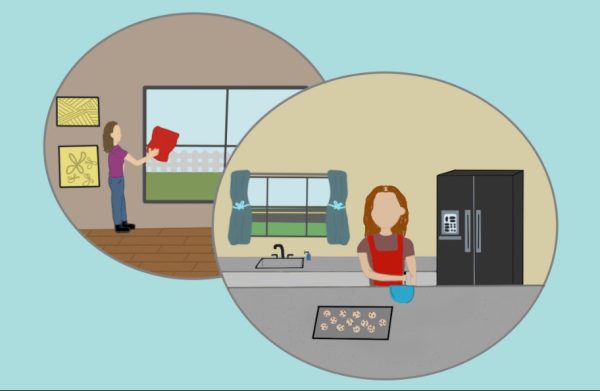Meditation: the key to a healthier life for students
December 13, 2019
Monotonous, stressful, and exhausting – these are three words that some may say paint a picture of high school life. On school days, many students repeat a cycle of waking up unhealthily early, going to school, attending extracurriculars, eating (optional), staring at a phone screen, completing homework and falling back asleep.
In the pursuit of success, some students’ busy lives burden their minds with cascades of never-ending thoughts. These thoughts too often create sleep-deprived students who are overwhelmed with anxiety. While students have many different ways of coping with this anxiety, there is one method that has been growing in popularity and should be adopted here at BVH: meditation.
Psychology Today defines meditation as “a mental exercise that trains attention and awareness. Its purpose is often to curb reactivity to one’s thoughts and feelings….” Springing from Buddhist tradition, meditation has gradually become more ingrained into western culture, with everyone from celebrities to Chief Executive Officers (CEOs) trying it out. More recently, attention has been drawn to the practice of meditation by students.
Despite its religious origins, meditation does not need to be a spiritual ritual—as the practice has become more mainstream, it has transformed into a conventional form of stress relief. As explained by Medical News Today, there are several types of meditation, including everything from loving-kindness meditation to kundalini yoga to zen meditation.
One form of meditation that is especially practical and well-suited for students is known as mindfulness meditation, which “urges practitioners to remain aware and present in the moment.” This often involves what is known as breath awareness, in which practitioners breathe deeply and slowly, or count their breaths while eliminating all other thoughts. Medical News Today furthers, because breath awareness can be practiced in any setting, it is one of the most popular forms of meditation.
In conjunction with the rising popularity of meditation, several studies have scientifically proven its medical benefits. According to healthline.com, a study of mindfulness meditation conducted over eight weeks has proven to decrease “symptoms of anxiety disorders, such as phobias, social anxiety, paranoid thoughts, obsessive-compulsive behaviors and panic attacks.” Meditation also lowers the production of an inflammatory chemical known as cytokine, which is associated with depression.
Moreover, problems common to high school students—specifically focus and sleep—can be alleviated through meditation. For instance, it can be thought of as “weight lifting” for a person’s attention span; healthline.com furthers that human resource workers practicing meditation were able to focus on tasks for longer. Not only this, but people who meditate have also exhibited increased abilities to fall asleep earlier and for longer periods of time.
These benefits are imperative because, quite frankly, high school students all across the nation are increasingly overwhelmed by their surroundings. A Pew Research survey reported that 70 percent of students believe that anxiety and depression are a “major problem” among their peers. In the words of Kathy Reamy, a counselor at La Plata High School, “Honestly, I’ve had more students this year hospitalized for anxiety, depression, and other mental-health issues than ever.”
Obviously, something must be done in order to help put this urgent mental health epidemic to rest. Fortunately, meditation can serve this role by being implemented into student life. For example, schools can designate more class time for independent meditation. According to Lee Cousin, instructional coach for Bensalem School District, even a short two-minute break can allow students to reset their brain and, in turn, become more active and engaged in class activities.
At home, students can practice breath awareness in times of distress in order to bring relief. Closing their eyes, slowly breathing and disengaging with the outside world is not complicated and can be done before falling asleep, or maybe even while taking a shower. Even more effective would be the practice of substituting meditation for distracting activities, such as staring at a phone or TV.
Yes, hard work breeds success. However, the long road towards that success should not be a road of mental self-destruction. By meditating, students will be given the fuel they need in order to continue working towards their dreams—without mental roadblocks completely crushing their motivation. Taking one deep breath each day is all it takes to produce a lifetime of benefits.












